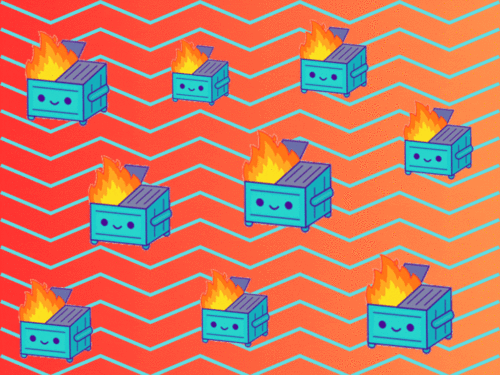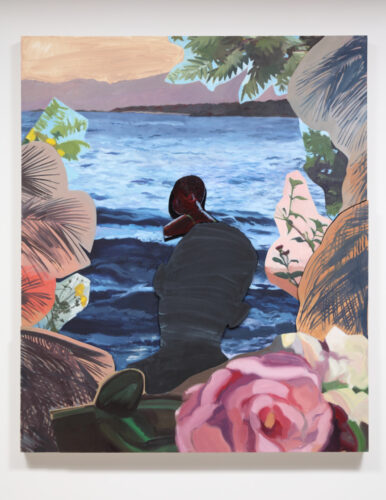I was stunned by Rice’s exhibition at the Peale because it cast everything I’d been thinking and reading and writing into giant, multivalent pieces filling room after room. Jeffrey Kent, the Curator in Residence at the Peale who curated the show (and whose role as Co-Director of BmoreArt’s Connect+Collect program makes him part of the magazine’s core team) describes Rice’s work as conceptual, but steeped in research and critical theory.
“I was blown away after seeing the rigorous process she puts into her artwork, and that it is informed by historical relevance, research, and critical theory,” Kent says.
Like Kent, I was also blown away. The Safety Net–Baltimore (2018) is a literal net linked together out of white, red, and yellow zip-ties—the plastic handcuffs cops use—in the pattern of the redlining map, which had been used to segregate the city. I’d just published a book about Baltimore’s Gun Trace Task Force crimes and it felt like the whole thing was there in that one piece, with layers of meaning overlapping, connecting segregation, policing, restraint, and safety.
Rice’s work is not only technically virtuosic and conceptually rigorous—it is often funny. Every time I hear a white person talk about “pulling themselves up”—which is surprisingly often—I think of Rice’s hilarious sculpture Bootstraps (2019), which appears to be a minimalistic, textured square painting, but is actually a handmade linear composition of bootstraps. And yet, it’s not only funny. Assembled with repeated looping rolls, the straps create a texture that is quite visually soothing and intricately satisfying. Another work from the same series, I pulled myself up (2021), is a twenty foot tall ladder hanging from the ceiling and trailing down the gallery walls, also made entirely of bootstraps and rope.
Rice grew up in Tulsa, Oklahoma until her family moved to Fresno, California when she was in the seventh grade. As in so many white families, race was rarely talked about openly in Rice’s home, but she acknowledges that there are just all these “understandings” that one has within a white family circle. She had no idea at the time, of course, but unpacking all of those silent understandings would become her life’s work.
After earning a degree in sculpture from the University of Oklahoma in Norman, she moved to New Orleans where she met her husband, and they lived there until Katrina hit. They moved back to Oklahoma where she began teaching art in high school. She continued with her own work and decided to get an MFA at the University of Oklahoma, just after the birth of their second child.
Rice’s two children are Black while she and her husband are white, and her perceptions around family life, race, and safety radically shifted and started to surface in her studio after becoming a parent.
“I was making art about being a parent,” she says. “Anything that got crazy at home went into my studio.” For example, she began weaving as a reaction to the massive amount of laundry her young family required, and the feeling of being overwhelmed by it. Instead of keeping her home life separate, she brought some of the laundry into her studio and began to cut up the clothes and weave them back together in new forms as a
commentary on domestic labor.
At the same time, and, as another aspect of parenting, Rice was reading book after book about the way America constructed race and the way that ideas about race continue to form America. When Michael Ray Charles, a Black artist whose work often deals with explicit racial stereotypes, was invited by her graduate program to visit her studio, Rice showed him her work and talked with him about what she was reading.
“He was the one who challenged me and said ‘Why does your work look like this when all your research and your family looks like that?’” Rice recalls.
























